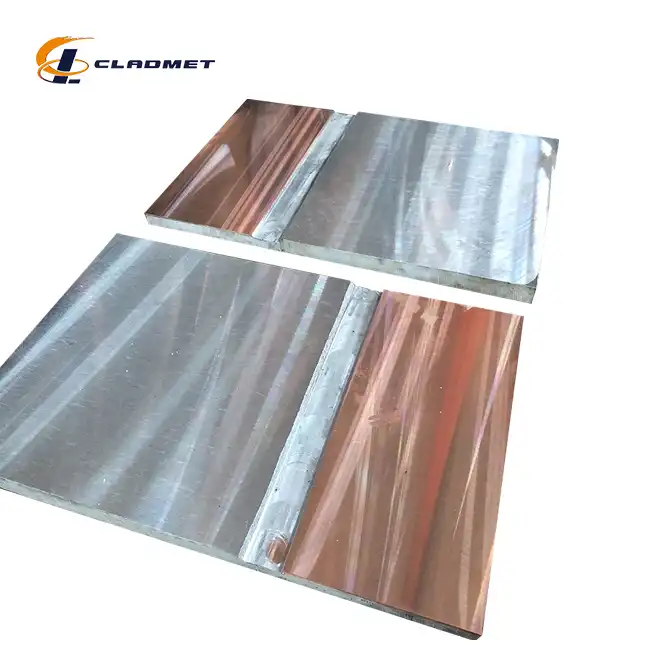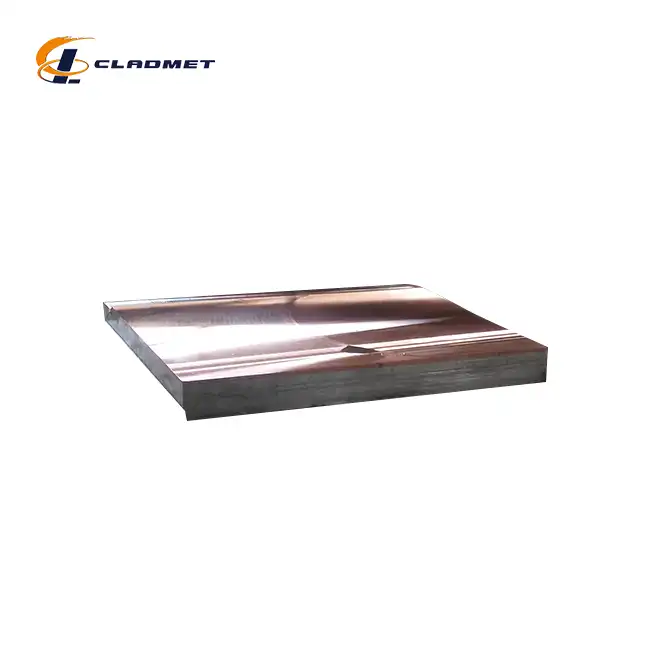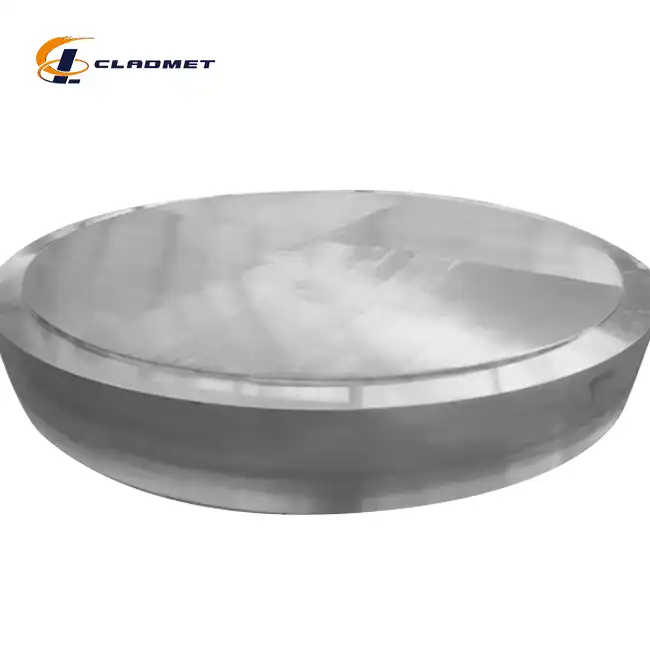What Is the Explosive Bonding Process in Cladding Steel Plate Manufacturing?
 2025-08-01 11:29:56
View:389
2025-08-01 11:29:56
View:389The explosive bonding process in cladding steel plate manufacturing represents one of the most advanced and effective methods for creating high-performance composite materials. This sophisticated technique utilizes controlled explosions to permanently bond dissimilar metals, creating cladding steel plates that combine the structural strength of steel with the specialized properties of protective metals. Explosive bonding achieves metallurgical bonds at the molecular level through high-velocity impact collision, resulting in superior joint strength and durability that surpasses conventional welding methods. This process has revolutionized industries requiring exceptional corrosion resistance, thermal performance, and mechanical strength, making cladding steel plates essential components in chemical processing, marine engineering, oil and gas, and aerospace applications where traditional materials cannot withstand harsh operational environments.
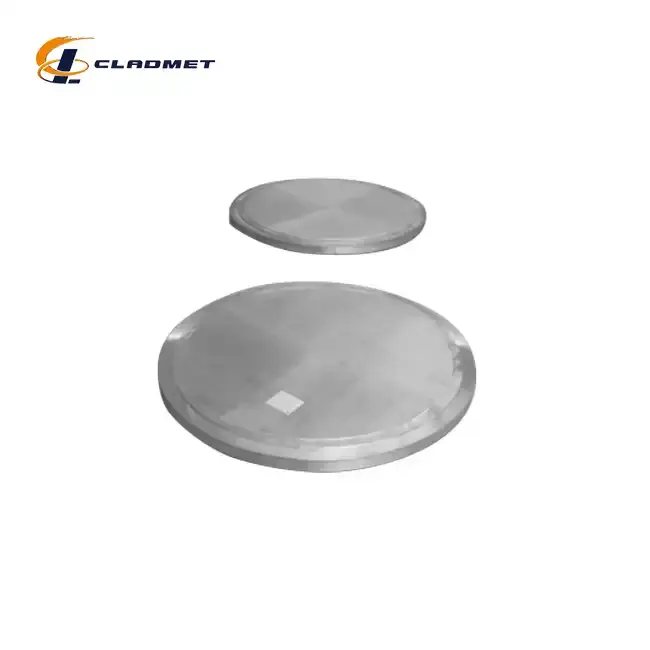
Understanding the Explosive Bonding Mechanism
The Physics Behind Explosive Bonding Technology
The explosive bonding process operates on fundamental principles of high-velocity impact physics and metallurgical science. When properly executed, this technique creates a unique wavy interface between the base steel and cladding material through controlled detonation. The explosive charge generates pressures exceeding 100,000 atmospheres and velocities reaching 3,000 meters per second, causing the metals to behave like fluids momentarily. This extreme condition forces the cladding material to collide with the base steel at oblique angles, creating a characteristic wave pattern that mechanically interlocks the materials. The cladding steel plate produced through this method exhibits bonding strengths typically exceeding 140 MPa, significantly higher than conventional bonding techniques. The process occurs in microseconds, preventing heat buildup that could compromise the metallurgical properties of either material, making it ideal for bonding heat-sensitive alloys like titanium, aluminum, and specialized stainless steel grades.
Material Preparation and Setup Requirements
Successful explosive bonding of cladding steel plates requires meticulous preparation of both substrate and cladding materials. The base material, typically carbon steel, low alloy steel, or stainless steel grades like Q235B, Q345B, or A516 Gr.70, must be cleaned to remove all surface contaminants, oxides, and scale. The cladding material, which can be stainless steel, titanium, copper, nickel alloy, or aluminum, undergoes similar surface preparation to ensure optimal bonding conditions. Surface roughness parameters are carefully controlled, with the base material often requiring slight texturing to enhance mechanical interlocking. The materials are positioned with precise standoff distances, typically ranging from 1 to 10 millimeters depending on the thickness and properties of the cladding steel plate being manufactured. Explosive charges are distributed uniformly across the surface, with the type and quantity of explosive carefully calculated based on the specific material combination, thickness ratios, and desired bond characteristics.
Quality Control and Bond Integrity Assessment
The explosive bonding process for cladding steel plates incorporates rigorous quality control measures to ensure consistent bond integrity and performance characteristics. Non-destructive testing methods including ultrasonic inspection, radiographic examination, and magnetic particle testing are employed to detect any discontinuities or unbonded areas. Destructive testing protocols evaluate bond strength through peel tests, tensile testing, and metallographic examination of the interface zone. The characteristic wave pattern at the bonding interface is analyzed microscopically to confirm proper formation and absence of defects. Cladding steel plates produced through explosive bonding at Baoji JL Clad Metals consistently achieve shear strengths exceeding 105 MPa and demonstrate excellent resistance to delamination under cyclic loading conditions. Quality control extends to dimensional accuracy, surface finish, and material certification, ensuring compliance with international standards including ASTM B898, ASME SB-898, and GB/T 8165.
Advanced Manufacturing Techniques and Process Optimization
Explosive Charge Design and Detonation Control
The selection and arrangement of explosive charges represent critical factors in achieving optimal bonding results for cladding steel plates. Different explosive compositions produce varying detonation velocities and pressure profiles, requiring careful matching to the specific material combination and thickness configuration. For titanium-clad steel plates, slower-burning explosives may be preferred to prevent excessive heating, while harder materials like stainless steel might require more aggressive charges. The explosive loading density, typically measured in grams per square centimeter, is calculated based on the impedance mismatch between the base and cladding materials. Initiation systems ensure simultaneous detonation across the entire surface area, preventing progressive wave propagation that could result in non-uniform bonding. Modern explosive bonding facilities utilize computer-controlled detonation systems that can precisely time multiple charges to accommodate complex geometries and large-scale cladding steel plate production.
Multi-Layer Bonding and Complex Configurations
Advanced explosive bonding techniques enable the production of multi-layer cladding steel plates with three or more distinct material layers. This capability is particularly valuable for specialized applications requiring multiple protective barriers or gradient material properties. The process involves sequential bonding operations, where each layer is carefully bonded to the previous assembly using precisely controlled explosive charges. For example, a cladding steel plate might consist of a carbon steel base, an intermediate corrosion-resistant layer, and a final wear-resistant surface layer. The challenge lies in managing the thermal and mechanical stresses generated during each bonding operation without compromising previously formed bonds. Temperature monitoring and controlled cooling cycles become essential to prevent metallurgical changes that could weaken the composite structure. These complex cladding steel plates find applications in extreme environments where single-layer materials cannot provide adequate protection.
Post-Bonding Processing and Finishing Operations
Following explosive bonding, cladding steel plates undergo comprehensive post-processing operations to achieve final specifications and surface requirements. Heat treatment processes may be applied to relieve residual stresses generated during the explosive bonding operation, particularly important for thick plates or stress-sensitive applications. Hot rolling or cold rolling operations can be employed to achieve precise thickness tolerances and improve surface finish quality. The cladding layer thickness, which can range from 1 to 20 millimeters, is carefully controlled through these finishing operations while maintaining bond integrity. Surface treatments including polishing, sandblasting, or specialized finishes are applied based on end-use requirements. Quality assurance continues throughout post-processing, with dimensional inspection, surface quality assessment, and mechanical testing ensuring that the finished cladding steel plates meet all specified requirements for strength, corrosion resistance, and performance characteristics.
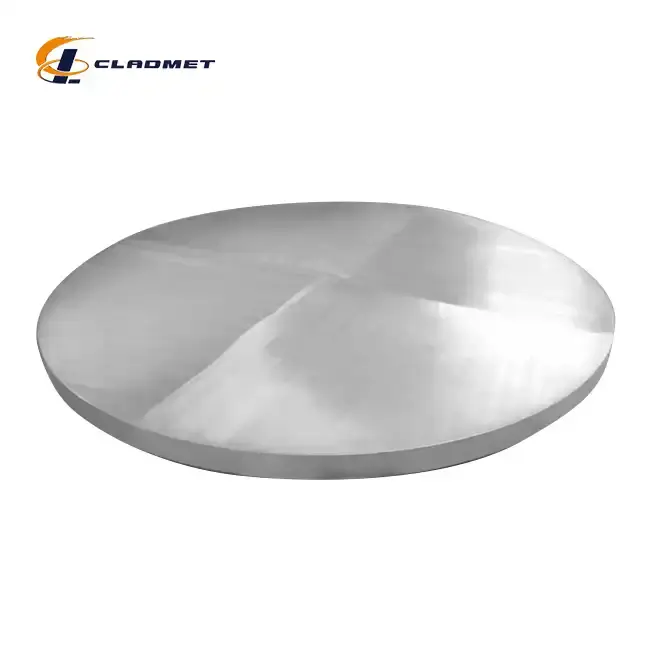
Industrial Applications and Performance Characteristics
Chemical Processing and Corrosion Resistance Applications
Cladding steel plates manufactured through explosive bonding demonstrate exceptional performance in chemical processing environments where corrosion resistance is paramount. The metallurgical bond created through explosive bonding provides superior resistance to galvanic corrosion compared to mechanically joined dissimilar metals. In chemical reactor vessels, storage tanks, and piping systems, these cladding steel plates withstand exposure to aggressive acids, alkalis, and corrosive process chemicals while maintaining structural integrity. The bond interface remains stable even under thermal cycling conditions common in chemical processing operations. Stainless steel clad plates offer excellent resistance to chloride-induced stress corrosion cracking, while titanium-clad configurations provide unmatched performance in highly acidic environments. The ability to customize cladding materials based on specific chemical compatibility requirements makes explosive bonding an ideal solution for diverse chemical processing applications.
Marine Engineering and Offshore Applications
The marine industry benefits significantly from explosive bonding technology in producing cladding steel plates that can withstand harsh seawater environments and extreme weather conditions. Offshore platforms, ship hulls, and marine equipment require materials that combine high strength with exceptional corrosion resistance to saltwater and marine organisms. Explosive bonding creates cladding steel plates with superior adhesion that prevents delamination even under the constant mechanical stress of wave action and thermal cycling. The technology enables the production of large-scale plates suitable for major structural components while maintaining consistent bond quality across the entire surface area. Copper-clad steel plates demonstrate excellent antifouling properties, while nickel alloy cladding provides superior resistance to seawater corrosion. The lightweight nature of these composite materials compared to solid corrosion-resistant alloys makes them particularly valuable for marine applications where weight reduction is crucial.
High-Performance Energy and Aerospace Applications
The energy sector, including both conventional and renewable energy systems, increasingly relies on explosive bonding technology for producing specialized cladding steel plates. In nuclear power applications, the precise control of material properties and contamination prevention achieved through explosive bonding ensures safe and reliable operation. The bond integrity remains stable under radiation exposure and thermal cycling conditions typical of nuclear environments. Aerospace applications benefit from the ability to join lightweight aluminum or titanium cladding to high-strength steel substrates, creating materials that meet stringent weight and performance requirements. The explosive bonding process produces cladding steel plates with consistent mechanical properties and dimensional accuracy essential for aerospace components. Heat resistance capabilities of these materials make them suitable for applications in jet engines, rocket components, and other high-temperature environments where traditional materials would fail.
Conclusion
Explosive bonding technology represents the pinnacle of modern cladding steel plate manufacturing, offering unparalleled bond strength, versatility, and performance characteristics. This advanced process enables the production of composite materials that combine the economic advantages of steel substrates with the specialized properties of protective cladding materials. The metallurgical bonds achieved through controlled explosive energy surpass conventional joining methods in strength, durability, and resistance to environmental degradation. As industries continue to demand materials capable of withstanding increasingly harsh operating conditions, explosive bonding technology provides the solution through precisely engineered cladding steel plates that meet the most stringent performance requirements.
At Baoji JL Clad Metals Materials Co., Ltd., we leverage our independent explosive composite technology and international qualifications to deliver cutting-edge cladding steel plate solutions. Our commitment to innovation, quality, and customer satisfaction drives continuous advancement in explosive bonding techniques. We offer comprehensive OEM/ODM services, enabling customization of materials, dimensions, and specifications to meet your unique requirements. Our extensive research and development capabilities ensure that we remain at the forefront of cladding technology, providing innovative solutions that exceed industry standards. With ISO9001-2000 certification and successful PED and ABS international qualifications, we guarantee the highest quality standards in every product we manufacture.
Ready to explore the possibilities of explosive bonding technology for your specific applications? Contact our technical team at sales@cladmet.com to discuss your project requirements and discover how our advanced cladding steel plates can enhance your operations. Let us partner with you to bring your vision to life through superior materials engineering and exceptional manufacturing capabilities.
References
1. Crossland, B., & Williams, J. D. (1970). "Explosive Welding of Metals and Its Applications." Oxford University Press, Materials Science and Engineering Applications.
2. Hokamoto, K., & Vesenjak, M. (2013). "Interface Morphology and Mechanical Properties of Explosively Welded Titanium-Steel Composites." Journal of Materials Processing Technology, Advanced Manufacturing Processes.
3. Findik, F., & Yilmaz, R. (2004). "The Effect of Process Parameters on the Mechanical Properties of Explosive Welded Steel-Aluminum Joints." Materials & Design, Composite Materials Research.
4. Acarer, M., & Demir, B. (2008). "An Investigation of Mechanical and Metallurgical Properties of Explosive Welded Aluminum-Steel Plates." Materials Letters, Metallurgical Engineering Studies.

_1737007724117.webp)
_1736996330512.webp)
